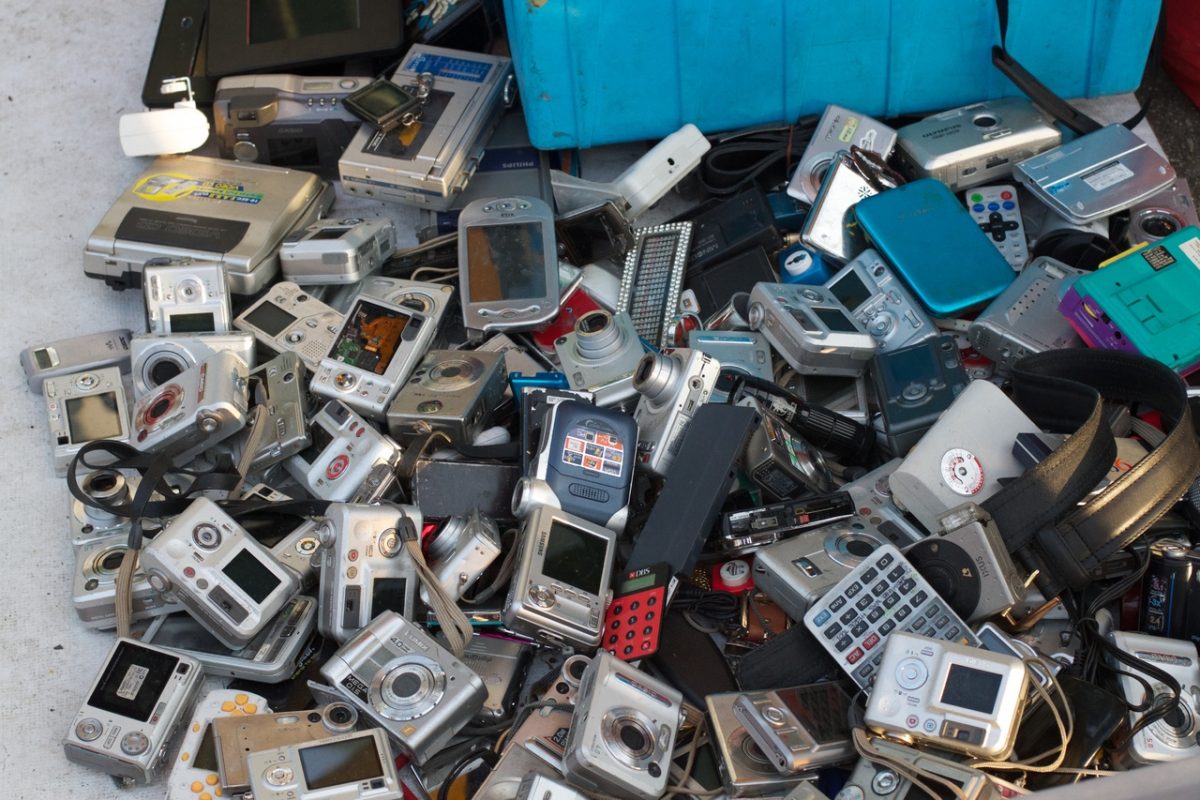
Addressing the volume of electrical and electronic waste (“e-waste”) is essential to working toward a sustainable future as it has become “the fastest-growing waste stream in the world,” according to a report published by the World Economic Forum on Jan. 24.

Nearly 50 million tons of e-waste result from manufacturing processes that produce electronic devices each year, with only 20 percent of that amount being recycled. Around half is from personal devices. (pxhere.com)
“E-waste is defined as anything with a plug, electric cord or battery (including electrical and electronic equipment) from toasters to toothbrushes, smartphones, fridges, laptops and LED televisions that has reached the end of its life, as well as the components that make up these end-of-life products,” the report explained.
While the expansion of access to technology and the proliferation of personal electronic devices has produced many positive results, a significant negative consequence is the increase in e-waste as new products are more widely available and replace older technology at faster rates.
Nearly 50 million tons of e-waste result from manufacturing processes that produce electronic devices each year, with only 20 percent of that amount being recycled.
Around half of this total is from personal devices (phones, televisions, computers and so on), and the other half from larger household appliances and commercial heating/cooling systems.
The United States and the United Kingdom are responsible for roughly half (25 million tons) of annual e-waste.
These annual totals are projected to rise to 120 million tons by 2050 if trends hold and changes are not made.
By 2040, carbon dioxide emissions from electronic manufacturing will likely account for 14 percent of total emissions.
Beyond environmental concerns, a refined process for limiting e-waste during production and for recycling and reusing e-waste after consumption would have significant economic advantages, as discarding electronic devices is literally throwing money into the garbage.
“There is 100 times more gold in a ton of smartphones than in a ton of gold ore. The earth’s richest deposits of valuable materials are sitting in landfill sites or people’s homes,” the report said. “If just the raw materials [from smartphones] are recycled, they could be worth up to $11.5 billion. The latest forecasts show that e-waste is worth $62.5 billion annually, which is more than the GDP of most countries. It is also worth three times the output of all the world’s silver mines.”
To address these challenges, the report proposed a “circular vision” in which recycling and reuse was a guiding principle at all stages of production and consumption.
Manufacturers should design products with longevity and repurposing / reuse in mind, as well as reuse scrap metals in future production.
Consumers should both extend the length of time they use devices and recycle them after upgrading to new technology.
This new way of thinking about electronics production and usage would not only help reduce e-waste and its negative environmental impacts, but also result in less expensive products and create jobs.
“It is easy for e-waste to be framed as a post-consumer problem, but the issue encompasses the lifecycle of the devices everyone uses,” the report said. “Designers, manufacturers, investors, traders, miners, raw material producers, recyclers, consumers, policymakers and others have a crucial role to play in reducing waste, retaining value within the system, extending the economic and physical life of an item, as well as its ability to be repaired, recycled and reused. The possibilities are endless.”
The full report is available here.
This article originally appeared on EthicsDaily.com.






